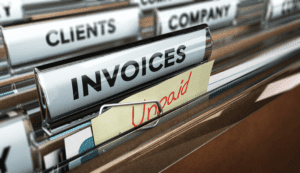Business Valuation Methods: 7 Approaches to Determining the Value of a Business

Similar to the capitalization of earnings valuation method, the multiple of earnings valuation method also determines a business’s value by its potential to earn in the future. On the other hand, the liquidation value asset-based approach to valuation is based on the assumption that the business is finished and its assets will be liquidated. In this case, the value is based on the net cash that would exist if the business was terminated and the assets were sold. With this approach, the value of a business’s assets will likely be lower than usual—as liquidation value often amounts to much less than fair market value. The most important part of this model is the assumption that your profits, growth, and finances will be stable for a long period of time. Thus, this model is best suited for businesses expecting stable cash flows for years.
- If you need help with determining your company’s worth, schedule a free consultation with Andrew Rogerson.
- If you’re looking to get the maximum possible for your business, or an accurate value for a business you might buy, you’ll add more calculations.
- Of course, this method only works for businesses that can access sufficient market data on their competitors.
- In this case, the value is based on the net cash that would exist if the business was terminated and the assets were sold.
- Consequently, only use this valuation formula if the comparison company is quite similar to the owner’s company.
- The logic goes that, even if everything goes wrong in management and the company’s sales fall dramatically after the acquisition, it can always fall back on the liquidation value.
The such calculation looks like an over-simplification but it can give you a quick idea of the potential value of your business. Seth David is the chief nerd and president of Nerd Enterprises, Inc. which provides consulting and training services in accounting and productivity based software. Consulting services range from basic bookkeeping to CFO-level services such as financial modeling.
Discounted Cash Flow Valuation Formula
In some cases, the range suggested by the analysts can be as much as 20% of the stock’s current price – hardly a specific valuation. There is no question that the biggest determinant of the valuation method used is available informtion. To take the example of comparable transactions, without any reasonably comparable transactions, there is no way that this valuation method can be conducted. After conducting a preliminary analysis of the company, whoever is conducting the valuation chooses the method, which is most suitable to the business and its industry.

Limitations of this approach include limited data; the market may not provide many examples of comparable sales or offerings and independent verification of value may not be available. The second approach is analogous to the use of comparables in real estate appraisal. Generally, the two main earning value methods — capitalizing basic business valuation formula past earnings and discounted future earnings — are used when a company is seeking to buy or merge with another company. Market-value approaches are the least accurate and can lead to a business being under- or overvalued. A further consideration for valuing a company is what the end user requires the valuation for.
common business valuation methods
It can be hard to objectively assess how much your venture is worth after putting so much work in over the years. This is where business valuation calculations, ideally handled by a third-party expert, can play a role. Business valuations are used for mergers, acquisitions, tax purposes and more.
- Different industries have different multipliers, and each business within that industry may have higher or lower multipliers depending on factors such as growth opportunity.
- “If you are using a software package then make sure everything is linked in, and all the relevant information is up to date, complete and accurate.
- Each additional year becomes more difficult to estimate with an acceptable degree of accuracy.
- In this article, we’ll examine all the important elements of business valuation from start to finish.
Anyone who wants to buy or invest in your business wants to know how much money it makes. Your valuation will be higher if profits are increasing for multiple years, but will be lower if they are decreasing or erratic. It’s also important to remember that any valuation will be based on net profit rather than gross profit or operating profit. In addition, a business or asset might be of greater value to a particular buyer; this is often the case in mergers and acquisitions. A random buyer on the open market would not realize these benefits, so for that buyer, the value of the business would be less. The premise of value for a merger or acquisition might be substantially higher as a result.
Present Value = (Annual Income/ 1+ Discount Rate ^ (1/ number of years)
Bringing together these options is the basis behind real options analysis for valuation. The liquidation value,(which is essentially the same as the book value) is what Warren Buffett claims to have always looked at when seeing if businesses are overvalued on the stock market or not. In this article on business valuation, DealRoom borrows from some of the insights into valuation provided by colleagues that contributed to our sister site, M&A Science, as well as DealRoom founder Kison Patel.
Assets are the tangible and intangible resources owned by a company that can generate income or reduce expenses. Examples of assets include real estate, machinery, intellectual property, and cash reserves. Valuing a business’s assets helps in estimating the total value of the company, as they represent what it owns. These components include assets, liabilities, revenue, profitability, and market conditions. A comprehensive valuation considers all of these factors in order to provide an accurate estimation of a company’s worth. Having a clear understanding of what a company is worth enables business owners and stakeholders to make informed decisions.

